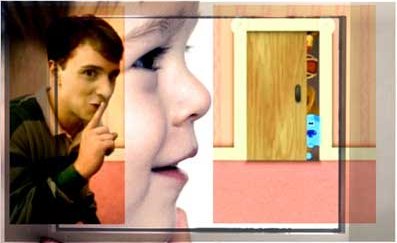
The study sat kids in front of two shows: one was a tape of someone asking to find where Piglet was hidden, the other was a live 2-way feed. Response to the live feed was equivalent to actual parental interaction [or, are researchers call it, "IRL" and "f2f."]
About a third of the 2-yo's were able to treat the faux-interactive taped version as a "social partner," something that 3-5yo Blues Clues viewers have already demonstrated to researchers. Very advanced.
There is apparently something called the "video deficit" that must be overcome so that kids can use information from a TV as effectively as from other sources. This information is vital for functioning in today's ever-changing, increasingly complex society, especially for things like defining one's identity and shopping.
Another message from researchers: "Steve, you call yourself an indie-rocker now? You can check out any time you want, but you can never leave. It's all on tape, baby."
When Toddlers Turn on the TV and Actually Learn [nyt]
Young Children's Use of Video as a Source of Socially Relevant Information [child dev, may/jun 06 abstract]
75,000,000 Toddlers Can't Be Wrong [themorningnews.org]


If you have not read it, read about the making of Blues Clues in Blink by Malcolm Gladwell (same guy who wrote The Tipping Point) [I'm pretty sure it was in Blink, but could have been in Tipping Point, If I've got it backwords, please correct me] - you think its a little TV show, when in reality the whole think is tested and studied in a crazy amount of detail. Really interesting how they compare Blues Clues to Seaseme Street.